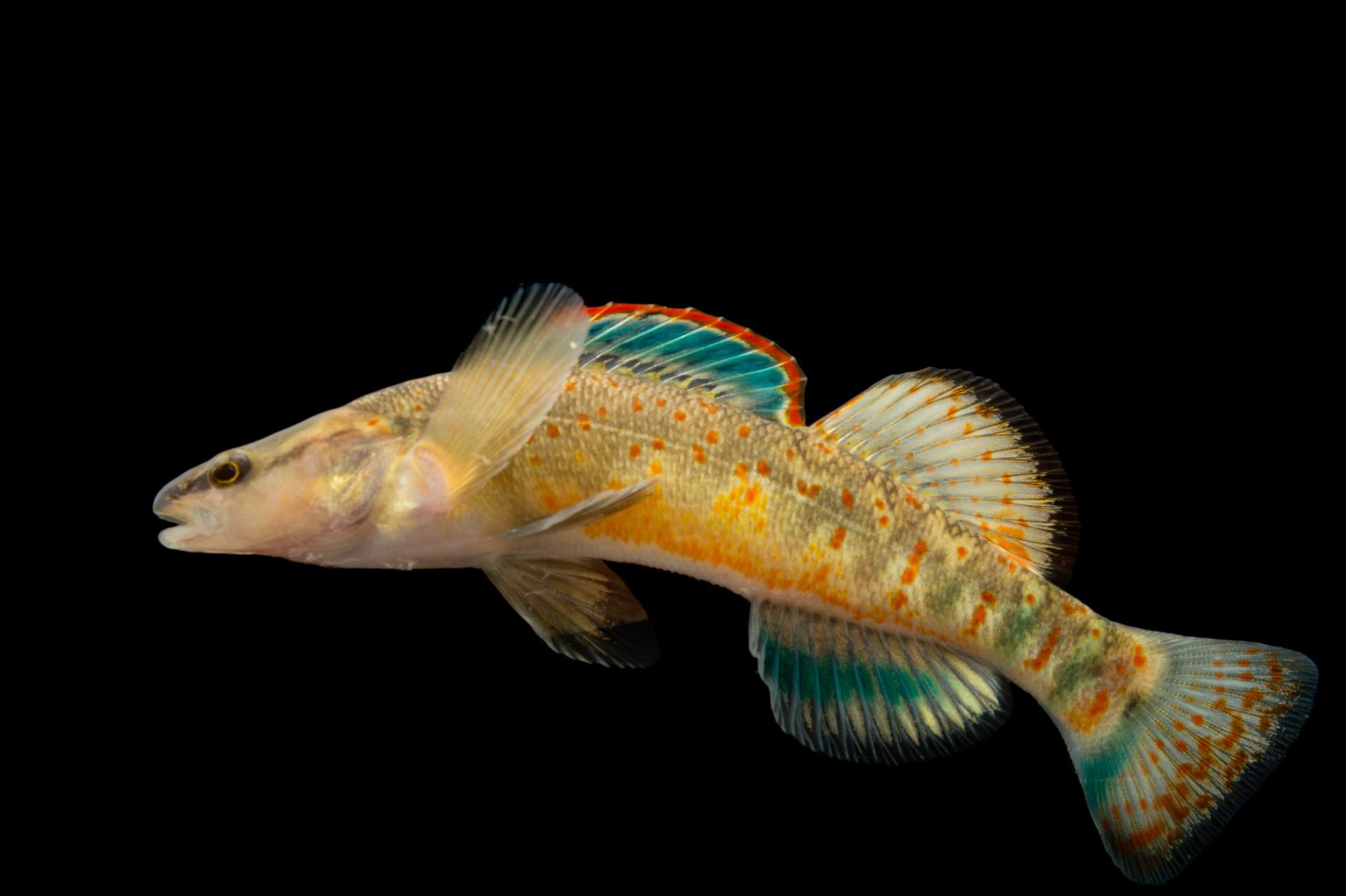Image by Joel Sartore
Kentucky Arrow Darter | Etheostoma spilotum
Status: IUCN: Near Threatened; USFWS: Threatened (2016)
CFI Status: PPropagated at CFI from 2009-2015 for propagation protocols, reintroduction, and monitoring; 2016-present for monitoring only. (What do these terms mean?)
-
The Kentucky Arrow Darter is a large darter for its classification as an Etheostoma, reaching a maximum size of almost 5-inches. This species packs a ton of color, painted with shades of yellow, orange, red, green, and blue. Their size and coloration are surprising when considering this species lives in small headwater streams that are often shallow and sometimes dry up to isolated pools during dry periods in summer. One might think it would make them vulnerable to predation from terrestrial predators such as herons or racoons. However, from above, their mottled tan backs perfectly disguise the fish among the stream substrate.
There are many factors which threaten Kentucky Arrow Darters including mining, habitat fragmentation from deforestation, and sedimentation impacts on water quality and streambed health. Signs of these threats are even still observed at their restoration site and the subsequent stream that the site flows into, also called a receiving stream. While Kentucky Arrow Darters are found in both streams, only adults are found at the mouth of the receiving stream. It is thought that only adults will use the receiving stream due to better tolerance for the high conductivity that comes from the input of dissolved solids from nearby runoff. However, both juveniles and adults have been observed in the restoration stream where conductivity is low. CFI uses the presence of juveniles as evidence that spawning has occurred, showing that conductivity may be the factor that is stopping these darters from expanding beyond the stream where the restorations take place.
-
It is intriguing to monitor these fish in the summer and early fall months. The slow pools that the Kentucky Arrow Darters hang out in during this season make it easy to spot their VIE tags from above as we calmly walk up the stream bed. After spotting them, we seine through the pool to see if we could catch them. Many times they managed to evade us, often scooting up under a big rock.
We propagated this species from 2009-2015 for reintroduction efforts in the Kentucky River drainage. Through our captive propagation work, CFI found that males are extremely territorial, requiring an immediate rotation of females out of breeding groups to avoid male aggression. Breeding groups for this species are best when composed of just one male and one female. However, if the female is not gravid (carrying eggs), or if she has just finished laying eggs, this makes her more susceptible to male aggression. This makes sense, as during our surveys of wild populations we would often see just one female per pool.
At times when we don’t have this species in our facility, our biologists continue to monitor restored populations with the Kentucky Department of Fish and Wildlife Resources and the Southern Region U.S. Forest Service. While CFI no longer propagates this species, a project is in development with the Southern Region U.S. Forest Service which would bring it back into the hatchery.
Upper Kentucky River drainage, KY
Native Range
Threats
Climate change, deforestation, habitat fragmentation, impoundments, mining, and sedimentation. What do these terms mean?
Spawning Habitat Preferences: Early spring spawners in very small headwaters streams with low flow in bedrock pools; bury eggs in sandy substrates
In Partnership With: Kentucky Department of Wildlife Resources; USDA Southern Region Forest Service; USFWS (Frankfort, KY)





